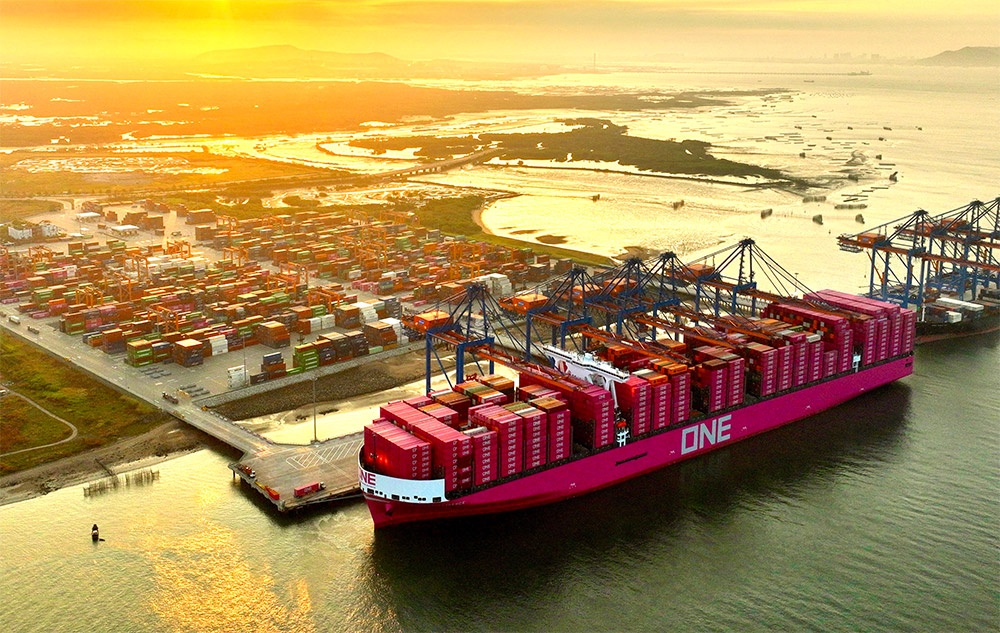High goals set for import-export
According to the Agency of Foreign Trade under the Ministry of Industry and Trade at last week’s year-end summary, in 2024, import-export activities recovered strongly.
Military conflicts and political instability continue to affect the global economy, but thanks to the strong direction of the government, Vietnam’s economy has maintained positive growth.
 |
| High goals set for import-export |
“In 2024, exporters took advantage of opportunities from the recovery of large, traditional markets, raising the total import and export turnover for the year of 2024 to a record of nearly $800 billion, an increase of 15 per cent compared to the previous year and nearly three times higher than the assigned plan,” said Phan Thi Thang, Deputy Minister of Industry and Trade.
Thang said the structure of export goods improved, reducing the content of raw exports, increasing the export of processed products and industrial products, creating conditions for Vietnamese goods to participate deeply in global production and supply chains. The processing industry group recovered strongly, being the main driving force contributing to the country’s total export turnover (accounting for nearly 85 per cent).
Export turnover grew at a high rate. Specifically, processed industrial products increased by 14.7 per cent; textile and footwear exports climbed by over 10 per cent; seafood exports and vegetables recovered strongly, rising by over 10 per cent and 20 per cent, respectively.
Both the foreign-invested and domestic-owned enterprises recorded good growth in export turnover. Of which, exports from domestic enterprises reached $105.5 billion, up 19.5 per cent, higher than the growth rate of foreign exporters (12.6 per cent).
“This year’s growth rate is fairly high compared to previous years,” said Le Duy Binh, CEO of Economica Vietnam.
“This is a result of businesses’ adaptability, flexibility, and initiative as well as government support incentives. In exchange, the economy is significantly impacted by import-export operations. Import-export operations have been a major factor in the recovery of the manufacturing and processing sector, as well as the industrial growth index,” Binh continued.
For the ninth consecutive year, there was a significant trade surplus of about $23 billion, which helped to stabilise macroeconomic indicators and exchange rates, and boost foreign exchange reserves.
This all demonstrates Vietnam’s efforts and adaptability in expanding markets and improving the quality of exported goods, contributing to consolidating its position in the international market.
However, to maintain and develop its position as an export power, the country faces significant challenges amid global fluctuations, geopolitical tensions and armed conflicts, natural disasters, and climate change, which all continue to have a heavy impact on economic recovery, growth, and global trade and investment.
In 2025, Vietnam continues to set a challenging target, with export growth of about 12 per cent compared to 2024.
Le Huy Khoi, deputy director of the Institute for Strategy and Policy Research on Industry and Trade, said that fundamental export products such as agricultural, forestry, and fishery products have improved very positively in recent times. Exports in 2025 will still have good growth momentum, continuing the foundation of 2024.
“We need to recognise that not only the market factor, but also the product supply capacity of Vietnamese businesses has been improved,” said Khoi. “The recovery of large markets such as the US and EU will be an important driving force to promote exports.”
Domestically, macroeconomic data in recent months on GDP growth, industrial production index, purchasing management, and export orders have been positive. At the same time, businesses are determined to take advantage of export growth momentum with market advantages.
Regarding 2025, Tran Thanh Hai, deputy director of the Agency of Foreign Trade, predicted that the world market would show signs of stability, inflation decreases, demand and purchasing power recovery; stable domestic production; strong foreign investment; and effective tree trade deals.
“It is forecasted that imports and exports will maintain good growth momentum from now until the first quarter of 2025, with steady growth in all product groups and markets,” Hai said.
However, he added that new technical barriers needed to be clearly addressed, including standards and regulations on quality, safety, environment, labour, and risk of extra trade defence measures.
He suggested small- and medium-sized enterprises take advantage of opportunities to promote imports and exports, and limit challenges. Businesses need to develop long-term plans.
“Companies must focus on competition, promoting trade, taking advantage of state support; utilising free trade, investing in improving personnel, and applying digital technology,” he added.
| Phan Thi Thanh Xuan, vice president and general secretary Vietnam Leather, Footwear, and Handbag Association
In 2024, the footwear industry’s exports reached over $26 billion, an increase of 10 per cent compared to 2023. The footwear and handbag industry achieved last year was in the context of businesses facing many difficulties, such as low unit prices, even being forced to reduce prices. In order to meet sustainable development standards, footwear enterprises face several major challenges. Firstly, the industry’s major export markets such as the US, EU, and Japan are setting very high requirements for sustainable development. The second challenge is related to costs, in which the cost of complying with green standards is a huge resource, almost beyond the capacity of small- and medium-sized enterprises. Along with that are increasingly high input costs from labour, raw materials, and logistics. Domestically, labour resources are becoming increasingly scarce, especially in urban areas where it is proving impossible to find workers. Finally, there is the challenge of applying science, technology, and research and development in leather and footwear businesses. Nguyen Thi Thu Sac, chairwoman Vietnam Association of Seafood Exporters and Producers
Despite facing many challenges in terms of market, logistics and raw materials for processing, seafood exports in 2024 will likely still reach an impressive target of $10 billion, with the two main products being shrimp and basa fish. For seafood, Vietnam is currently the third-largest exporting country, behind China and Norway. This is proof that the industry is on the right track in terms of sustainable development and increasing the added value of products. It is also the basis for the Vietnamese seafood industry to expect stronger growth in 2025 and beyond. In 2024, businesses and localities have focused on opening the seafood market. We have coordinated with the Ministry of Agriculture and Rural Development and the Ministry of Industry and Trade to open key markets such as the US and Europe. This has significantly impacted export market share, with increased values To export seafood to large markets, in addition to market regulations, we now need additional sustainability certifications, which are required by most buyers and retailers. Vu Duc Giang, chairman Vietnam Textile and Apparel Association
Vietnam’s exports were positive this year despite stagnant global demand. This success is attributed to the country’s strong production capacity and stable political landscape. The nation has emerged as a preferred alternative supply source for international textile and garment buyers. As of now, many enterprises have already secured orders for the first quarter of 2025 and are in negotiations for the second quarter. However, achieving set targets may require the sector to transform to meet the stringent demands of challenging import markets. Major importers are increasingly focused on sustainable development indicators, environmental, social, and corporate governance criteria. The green transition and digital transformation in manufacturing are creating dual pressures, forcing businesses to implement both aspects simultaneously or face elimination. The adoption of technology, innovation, and green standards enhances productivity and plays a decisive role in achieving sustainable development and strengthening competitiveness in the global market. |
What the stars mean:
★ Poor ★ ★ Promising ★★★ Good ★★★★ Very good ★★★★★ Exceptional
Related Contents
Latest News
More News
- Human-centred governance seen as key to AI development (December 19, 2025 | 18:19)
- Top 10 notable events of Vietnam’s industry and trade sector in 2025 (December 19, 2025 | 14:00)
- Tungsten surges to 12-year high as world enters a new 'black gold' race (December 18, 2025 | 17:27)
- Vietnam’s coffee exports set new record despite price pressures (December 18, 2025 | 17:13)
- Garment and textile sector seeks new growth after volatile year (December 18, 2025 | 17:01)
- VinSpeed and Siemens strengthen cooperation for high-speed rail development (December 18, 2025 | 16:53)
- High-tech adoption for TH true MILK (December 18, 2025 | 13:39)
- Takeda supports health resilience amid climate change challenges (December 18, 2025 | 12:39)
- Mondelez Kinh Do - a chapter of purpose-led leadership in Vietnam (December 18, 2025 | 09:44)
- VNPAY services receive the highest-level PCI DSS international security certificates for six consecutive years (December 17, 2025 | 23:47)




 Tag:
Tag:





















 Mobile Version
Mobile Version